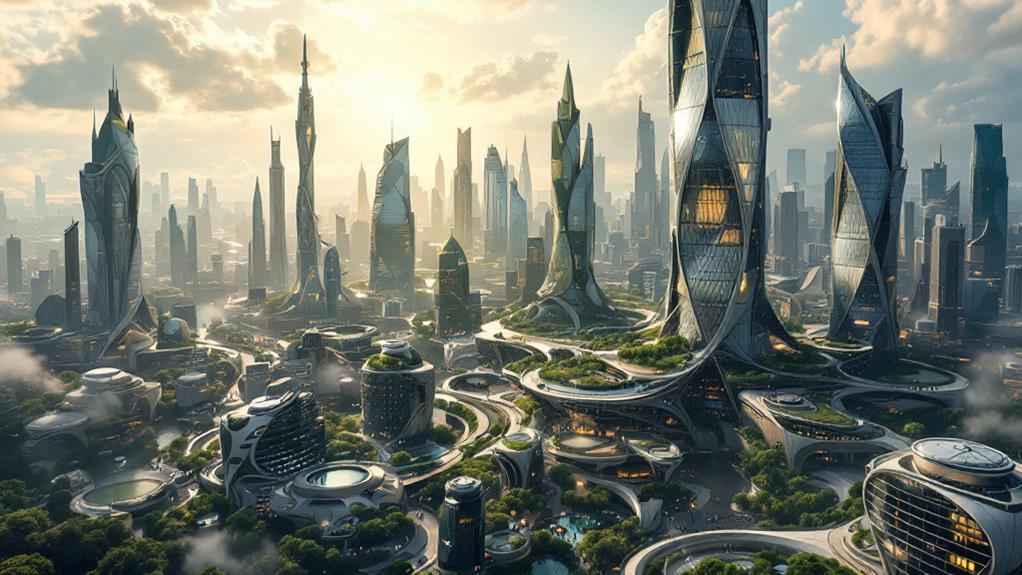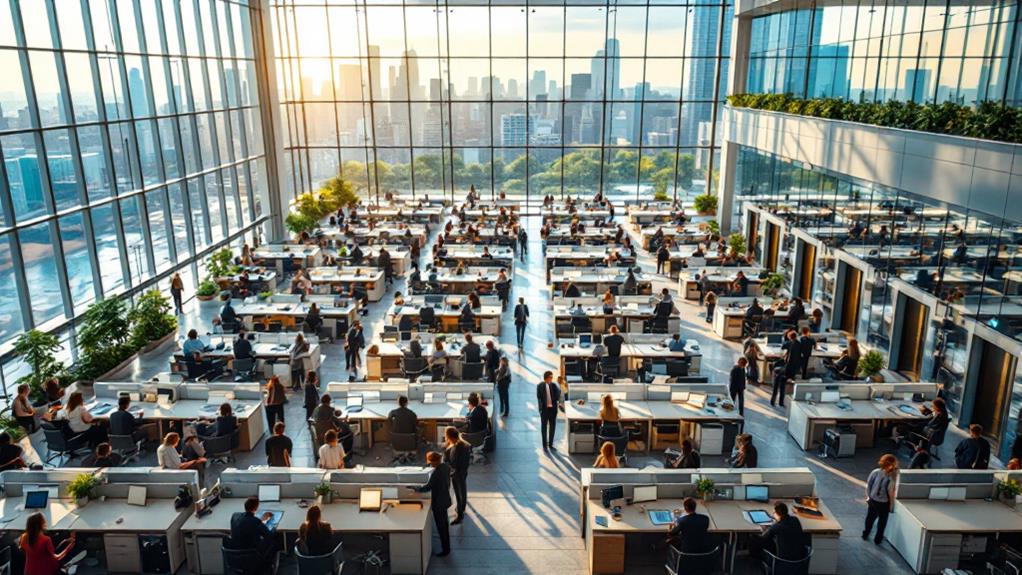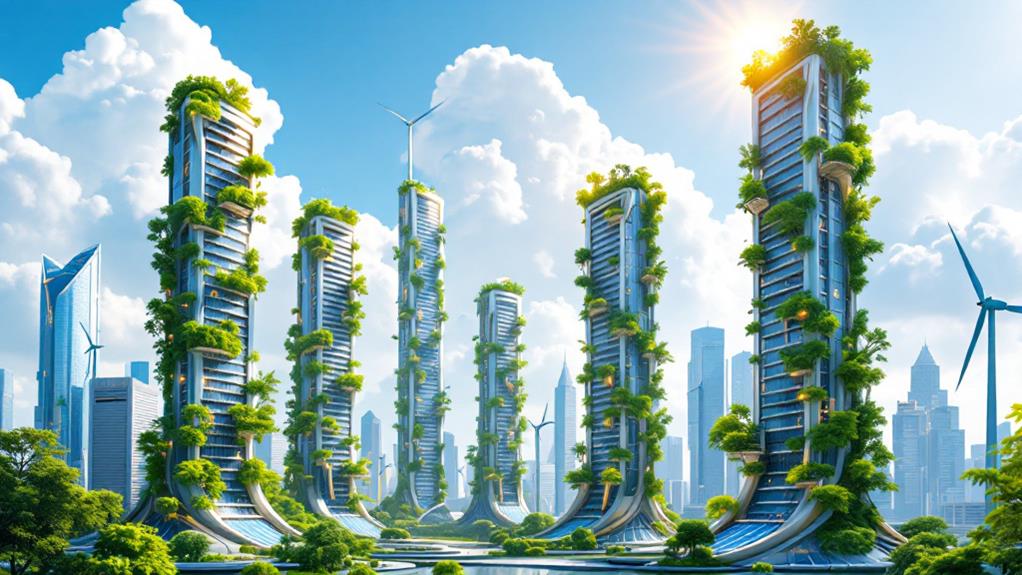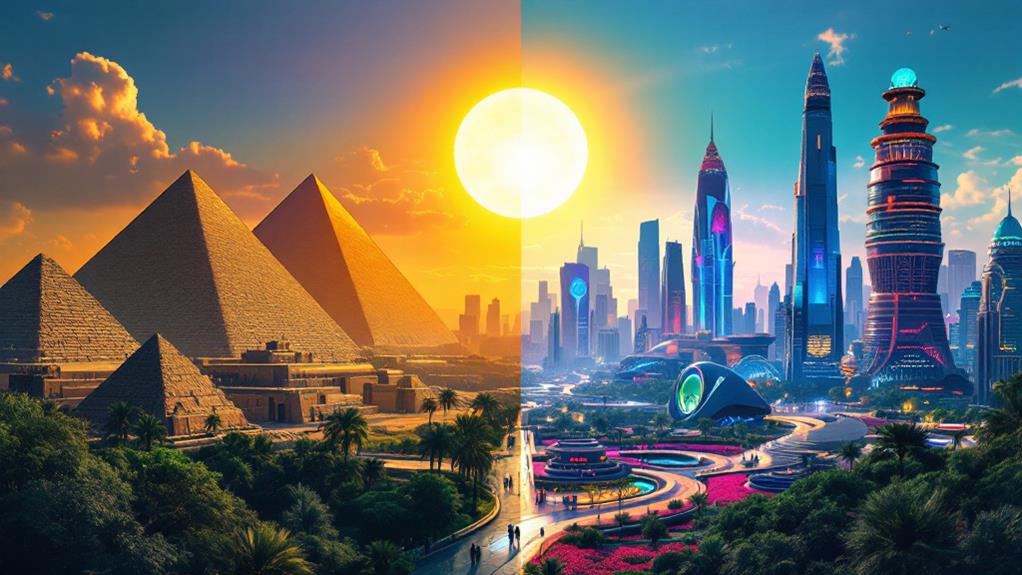The Costliest Building Projects in History: Where Billions Are Spent
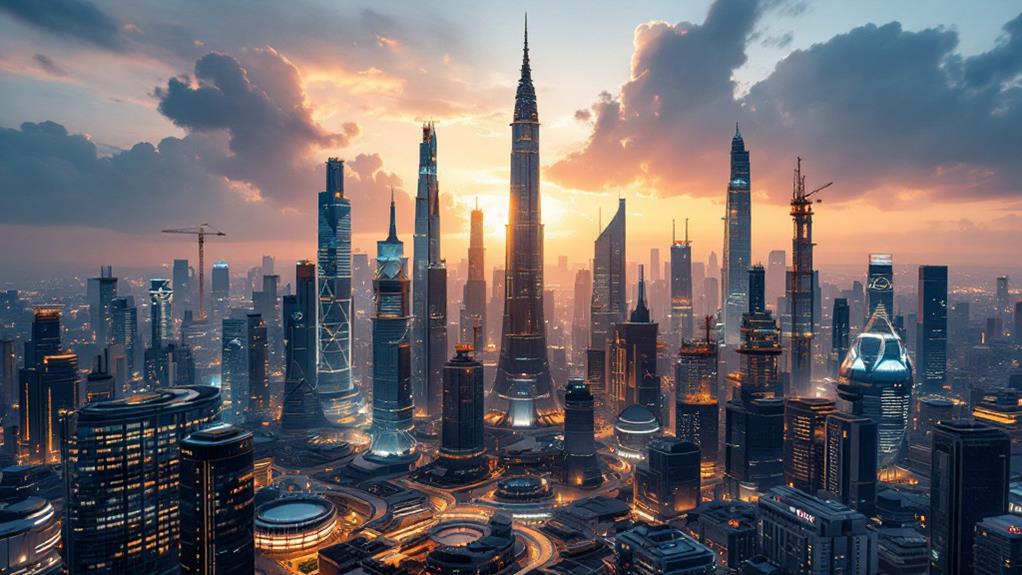
You're in for an eye-opener as you examine the world's costliest building projects. Imagine the U.S. Interstate Highway System stretching over 47,000 miles at $459 billion or California's high-speed rail linking San Francisco to Los Angeles, expected to cost up to $113 billion. Across the globe, the $100 billion King Abdullah Economic City in Saudi Arabia is designed for two million residents. In space, the International Space Station represents a $150 billion collaborative venture. These projects redefine ambition and innovation, setting new standards in different fields. By diving deeper, you'll uncover more about these groundbreaking investments.
Monumental Infrastructure Investments
Monumental infrastructure investments have reshaped landscapes and economies, showcasing human ingenuity and ambition. When you look at projects like the Interstate Highway System, you see an expensive undertaking that transformed the United States. This construction project cost around $459 billion and spans over 47,000 miles, enhancing both civilian travel and national defense since 1955. Likewise, the California High-Speed Rail represents a costly venture, with expenses projected between $76 billion and $113 billion. This ambitious project aims to connect major cities like San Francisco and Los Angeles by the late 2020s.
In Saudi Arabia, the King Abdullah Economic City stands as an example of grand vision with a price tag of $100 billion. This infrastructure project is designed to house up to two million residents and features extensive transport networks, with completion expected by 2025. On the other hand, Japan's Kansai International Airport showcases engineering prowess. Built on a man-made island at a cost of $29 billion, it's designed to withstand earthquakes.
Lastly, Dubailand, an entertainment behemoth in the Middle East, is projected to exceed $76 billion, highlighting significant investments in leisure infrastructure. These monumental projects reflect the staggering scale of human ambition.
Ambitious Transportation Undertakings
In the domain of ambitious transportation undertakings, few projects capture the imagination like the California High-Speed Rail. With an estimated cost ranging from $76 billion to $113 billion, it's set to connect San Francisco and Los Angeles by the end of the decade, promising major transportation improvements across California. This expensive construction project signifies a monumental step in easing congestion on major highways and enhancing travel efficiency.
Another marvel is the Channel Tunnel, completed in 1994. At an inflation-adjusted cost of $22.4 billion, it stretches 31.4 miles beneath the English Channel, linking the UK and France with three tunnels designed for traffic and security. This project exemplifies groundbreaking construction work that overcame significant geological challenges.
In China, the Beijing–Shanghai High-Speed Railway stands as a demonstration of rapid transit evolution. Completed in 2011 at an inflation-adjusted cost of $26.1 billion, it spans 1,318 kilometers (819 miles), making it the longest high-speed railway built in a single project.
While Dubailand and Kansai International Airport aren't transportation projects per se, their costs and scale echo the ambition seen in these transportation feats. Each reflects the drive to push boundaries in construction and engineering.
Cutting-Edge Space Ventures
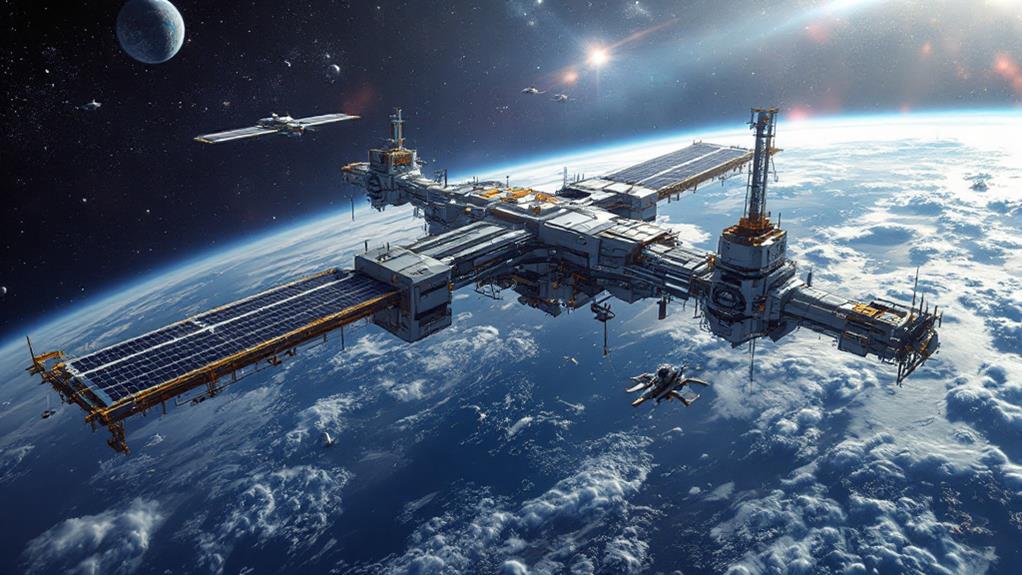
Exploring the frontiers of space has produced some of the most groundbreaking and expensive projects in history. The International Space Station (ISS), a hallmark of collaborative projects involving 14 countries, stands as a symbol of international cooperation, costing around $150 billion. Its construction and maintenance highlight the balance between ambition and financial prudence, especially during times of financial crisis.
The Apollo Space Program, a milestone in human achievement, cost about $25.4 billion in its day—equivalent to over $150 billion today. It set the stage for NASA's Artemis program, which is poised to return humans to the moon by the mid-2020s, with projected costs reaching $35 billion over the next decade. These ventures reflect humanity's relentless drive for advanced space exploration technologies despite potential cost overruns.
Then there's the James Webb Space Telescope, a marvel of modern science, costing $10 billion to develop and launch. It's designed to reveal the universe's secrets for the next decade. Meanwhile, the Mars Rover Perseverance, at $2.7 billion, epitomizes investment in ambitious leisure pursuits like Mars exploration. Each of these projects underscores how cutting-edge space ventures continue to push boundaries and budgets alike.
Lavish Urban Developments
While humanity reaches for the stars with ambitious space ventures, earthbound projects are reshaping our cities in ways that are likewise impressive and costly. One standout is Dubailand, a massive entertainment complex in Dubai, projected to cost over $76 billion. It's set to become the world's largest leisure destination, featuring theme parks and sports facilities, making it a hub for ambitious leisure. Meanwhile, Saudi Arabia's King Abdullah Economic City, with a $100 billion price tag, is designed to accommodate two million residents, enhancing the region's economy and serving as a major tourist attraction for Saudi Arabia.
Neom, another Saudi project, stands out with its futuristic vision and $500 billion investment. This carbon-neutral city plans to integrate green energy and span 16 boroughs. In India, the Delhi-Mumbai Industrial Corridor is an economic game-changer, with a $90 billion investment across 1,500 kilometers, aimed at improving infrastructure and creating millions of jobs.
Songdo International Business District in South Korea, costing an estimated $40 billion, is a model for smart cities, integrating sustainable infrastructure with advanced technology. These developments are not just about construction but reshaping urban living for a sustainable future.
High-Impact Energy Projects
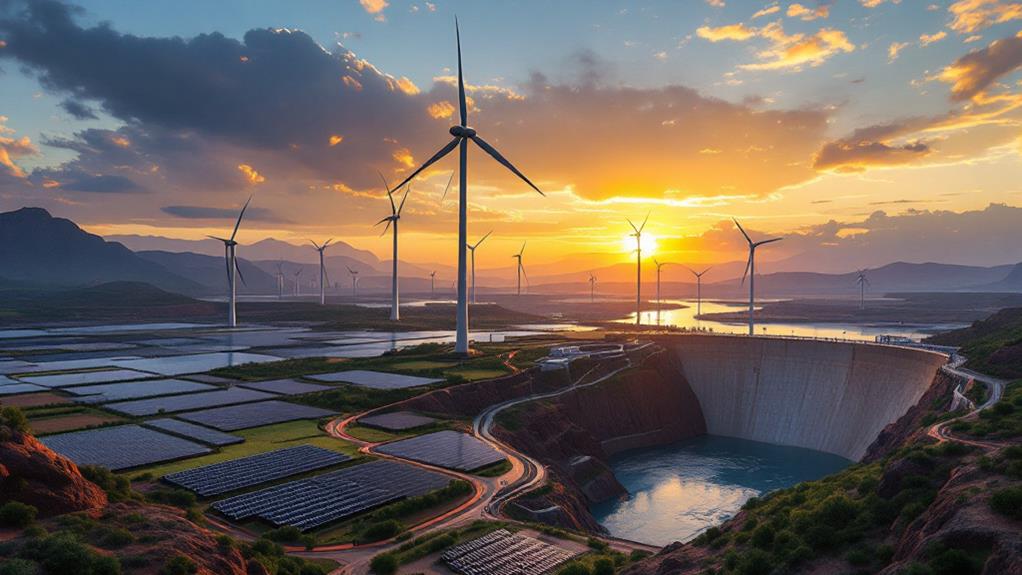
Innovation drives the world's most ambitious energy projects, reshaping how we harness and utilize power. The Kashagan Fields in Kazakhstan stand as a symbol of this ambition. With a staggering cost of $116 billion, it's the world's most expensive oil field, containing up to 12 billion barrels of oil. Meanwhile, in the USA, the California High-Speed Rail project aims to revolutionize transportation, connecting San Francisco and Los Angeles with an estimated cost of up to $113 billion. This initiative promises significant technological advancement in sustainable transport.
In the UK, Hinkley Point C is another high-impact energy project, projected at $31 billion. It aims to bolster nuclear energy capacity despite facing delays and budget overruns. Across the globe in Saudi Arabia, the Neom project, valued at $500 billion, focuses on sustainable urban development. It aims for carbon neutrality through cutting-edge green energy solutions, showcasing a commitment to futuristic living.
Lastly, the International Space Station, costing around $150 billion, exemplifies international collaboration in scientific research. It advances our understanding of energy projects beyond Earth, facilitating groundbreaking technological advancement. Each project, in its own right, shifts the paradigm of energy utilization worldwide.
Iconic Cultural Landmarks
As the world invests in transformative energy projects, it also dedicates resources to constructing monumental cultural landmarks that reflect human achievement. These iconic cultural landmarks often emerge as the largest and most expensive projects worldwide. The Al-Masdschid al-Harām in Mecca, with an astronomical construction cost of $100 billion, is the largest mosque globally, accommodating up to 820,000 worshippers, and with expansions, it will hold 1.2 million. Nearby, the Abraj Al Bait Towers also stand as a manifestation of grandeur with a price tag of $15 billion, featuring the world's largest clock face.
In major US cities, the One World Trade Center in New York City symbolizes resilience and triumph, costing $3.8 billion. Its towering presence at nearly 514 meters offers a poignant reminder of recovery post-9/11. Meanwhile, New York is also home to Yankee Stadium, the priciest sports venue, completed at $1.5 billion.
Key highlights include:
- Burj Khalifa: Tallest building globally at 828 meters with a $1.5 billion construction cost.
- One World Trade Center: Symbol of resilience, costing $3.8 billion.
- Abraj Al Bait Towers: Includes the world's largest clock face, costing $15 billion.
